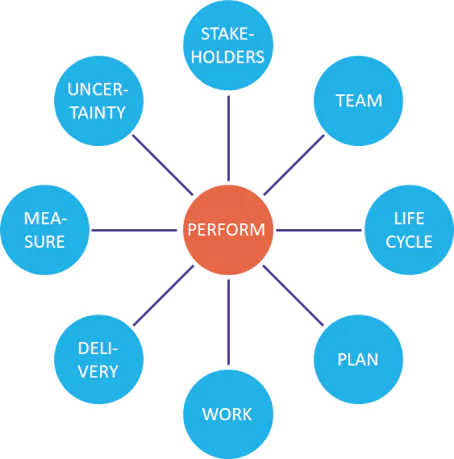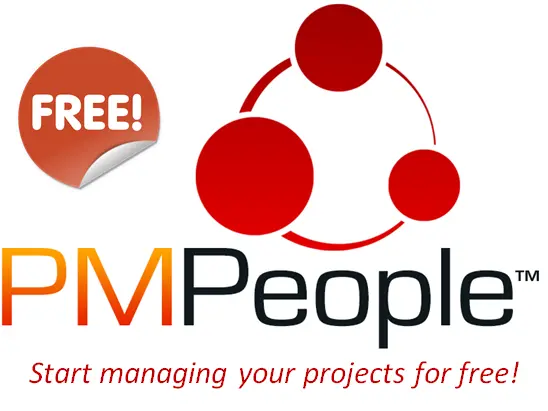Todo el mundo puede cocinar, pero no todo el mundo es cocinero. Todos podemos cantar, pero no todos somos cantantes. Nuestra profesión no es diferente: todos podemos controlar las tareas del equipo, pero eso no nos convierte en project managers. Si necesitamos saber si un cocinero es un buen profesional, no necesitamos pruebas para asegurarnos de que sigue ciertos procedimientos. Verificamos el resultado de valor: probamos su comida.
La gestión de proyectos es una profesión, y como tal debería ser considerada por cualquier persona: gerentes, miembros del equipo, colegas, amigos, familiares, universidades, empresas, ONGs, gobiernos, etc. Cualquiera puede reconocer a un buen o mal cantante, cocinero, etc. De manera análoga, cualquier persona debería saber objetivamente si un project manager es un buen o mal profesional. Las fuentes de evidencia deberían ser comprensibles para cualquiera, no solo para los profesionales certificados PMP® o similares.
« Cualquier persona debería poder saber si un project manager es buen o mal profesional. »
Las organizaciones que lideran la economía de proyectos no desean burocracia relacionada con la documentación, flujos de trabajo o reuniones. Los profesionales de proyectos deberían dominar sus habilidades sociales. Hoy en día, los proyectos tienen éxito cuando las personas colaboran en la gestión de proyectos. Recordemos un valor del Manifiesto Ágil:
« Individuos e interacciones sobre procesos y herramientas. »
En agosto de 2021, PMI publicó la 7ª edición guía de los fundamentos de gestión de proyectos, que supuso un cambio de paradigma desde procesos a dominios de desempeño, esto es, se cambian las salidas (documentos) por resultados de valor.
Los 8 dominios de desempeño, planteados para que puedan ser comprensibles por cualquier interesado, servirán como “lengua franca” para para que las personas puedan indicar si el proyecto va bien o mal:

- Dominio de Interesados: ¿Se involucra correctamente a los interesados? ¿Se atienden oportunamente sus solicitudes de cambios, comentarios, retroalimentación, etc.? ¿Se gestiona adecuadamente la comunicación?
- Dominio de Equipo: ¿El equipo trabaja con sinergia y cohesión? ¿Los miembros del equipo saben qué papel juegan dentro del contexto global? ¿Pueden hacer comentarios anónimos? ¿Pierden mucho tiempo en actividades no productivas como imputar horas y gastos? ¿El project manager está liderando efectivamente al equipo?
- Dominio de Ciclo de Vida: ¿Sabemos en qué fase está el proyecto? ¿Se usa el enfoque de gestión apropiado, ya sea predictivo, híbrido o ágil? Si el enfoque es ágil, ¿se va iterando cíclicamente para refinar el alcance?
- Dominio de Planificación: ¿Se ha justificado adecuadamente el proyecto? ¿Ha sido aprobado por un cargo directivo? ¿Se ha descompuesto en elementos manejables? ¿Se tienen claros los hitos principales? ¿Las principales dependencias? ¿El project manager sabe con antelación lo que hay que hacer hoy, esta semana, este mes, etc.? ¿quién hará qué actividades? ¿cuándo? ¿cuánto costarán? ¿cuándo finalizará el proyecto?
- Dominio de Trabajo: ¿Se hacen seguimientos? ¿Se puede saber cómo iba el proyecto hace un mes? ¿Se controlan los cambios? ¿Se van registrando los hechos relevantes y las lecciones aprendidas?
- Dominio de Entrega: ¿Se hacen entregas parciales con la cadencia adecuada? ¿Se validan los entregables?
- Dominio de Medición: ¿Se miden las desviaciones de tiempo y coste? ¿Se hacen pronósticos de plazo y coste con un nivel de precisión razonable? ¿Se han tomado acciones correctoras o preventivas? ¿Se han controlado las horas trabajadas y los gastos incurridos?
- Dominio de Incertidumbre: ¿Se anticipan los problemas graves antes de que sea demasiado tarde? ¿Hay demasiadas sorpresas? ¿Demasiadas crisis? ¿Demasiada improvisación? ¿Han sido efectivas las respuestas a los riesgos?
Demostrar resultados de valor con PMPeople

PMPeople es una tecnología diseñada para facilitar la colaboración entre profesionales de proyectos a través de roles definidos. Su primera versión comercial se lanzó en abril de 2018. Esta plataforma está dirigida a PMOs y profesionales de proyectos, quienes pueden reducir significativamente la burocracia a través de la colaboración. Ofrece 12 roles que permiten trabajar en equipos dedicados a proyectos, programas y portafolios, todo ello en un entorno en la nube.
PMPeople no se limita a seguir simples flujos de trabajo, cadenas de supervisión, procesos o plantillas documentales, sino que fomenta la interacción genuina entre las personas. Los directores de proyectos tienen la capacidad de gestionar proyectos de múltiples organizaciones, aplicando marcos de gestión predictivos y ágiles. Los interesados pueden supervisar múltiples proyectos y proporcionar realimentación a través de la aplicación móvil. Los miembros del equipo pueden saber con quién deben colaborar, qué tareas deben realizar, pueden enviar comentarios, registrar horas de trabajo, gastos, etc.
Con PMPeople, los interesados pueden comprobar los resultados de gestión en los 8 dominios de desempeño, con evidencias en cada paquete de trabajo:
- Interesados: “En el proyecto hay que mantener una relación productiva con los interesados, asegurando su nivel de involucración adecuado. Los interesados favorables al proyecto deben quedar satisfechos, y los que se oponen no deberían impactar negativamente”. En PMPeople, el project manager puede actualizar el registro de interesados indicando el nivel de involucración (desconocedor, reticente, neutral, partidario y líder), atender los cambios que soliciten, sus comentarios, sus retroalimentaciones, etc. El project manager puede decidir acciones concretas con interesados revisando el registro de interesados, el registro de problemas, el registro de comentarios y el registro de cambios.
- Equipo: “El proyecto requiere un equipo de alto rendimiento, empoderado, resiliente y alineado con los objetivos. Deben responsabilizarse de los entregables y los resultados en un entorno colaborativo, basado en la confianza mutua”. En PMPeople, el project manager puede explicar los resultados esperados a los team members, leer sus comentarios (que pueden ser anónimos), aprobar imputaciones de horas y gastos, etc. Los team members pueden ver sus asignaciones, completar tus tareas, saber quiénes son sus compañeros, actualizar un team charter, aportar comentarios para el project manager, información para las retrospectivas, leer las retroalimentaciones de los gestores y del resto de interesados, etc.
- Enfoque de Desarrollo y Ciclo de Vida: “El proyecto debe seguir un ciclo de vida (predictivo, adaptativo, o híbrido) que sea consistente con el enfoque de desarrollo de los entregables. Las diferentes fases del ciclo de vida deben facilitar la gobernanza y permitir la cancelación anticipada si dejan de satisfacerse los criterios estratégicos”. En PMPeople, el project manager puede indicar la fase de gestión del proyecto (inicio, planificación, ejecución o cierre) y la fase técnica usada en el área de negocio. El project manager puede gestionar proyectos predictivos, adaptativos e híbridos, publicando información regular del progreso en los sucesivos seguimientos.
- Planificación: “El project manager sabe con antelación qué hay que hacer la próxima semana, el próximo mes, cómo se sabrá que se ha terminado, etc. El modelo de planificación es completo, incluyendo todos los componentes necesarios para satisfacer las expectativas de los interesados, y se elabora progresivamente a medida que se tiene mejor información”. En PMPeople, el project manager puede practicar la planificación gradual del alcance, cronograma, coste, financiación, recursos, entregables, requisitos, tareas, etc.
- Trabajo del Proyecto: “El desempeño del proyecto se monitoriza de forma efectiva mediante informes de seguimiento. Se asegura que se siguen procedimientos ajustados para garantizar la calidad. La comunicación con los interesados permite satisfacer sus necesidades de información. Se gestionan apropiadamente las subcontrataciones y la utilización de los recursos físicos. En los proyectos predictivos, se controlan los cambios. En los proyectos adaptativos, se actualiza la lista de funcionalidades. El equipo es capaz de minimizar el retrabajo y optimizar su velocidad”. En PMPeople, el project manager puede registrar seguimientos periódicos, gestionar las adquisiciones, la documentación, los comentarios, los cambios, lecciones aprendidas, retrospectivas, etc. El project manager puede controlar el trabajo en proyectos ágiles y proyectos subcontratados.
- Entrega: “El proyecto ha de justificar su alineamiento dentro de la organización y del negocio, entregar los beneficios conforme a un plan preestablecido, entregar productos conforme a los requisitos y cumplir las expectativas de los interesados que validan los entregables”. En PMPeople, el project manager puede documentar el project charter y el business case, gestionar entregables, requisitos, etc. El project manager puede medir la satisfacción de los interesados a partir de sus comentarios, cambios solicitados y retroalimentaciones.
- Medición: “En cada fecha de seguimiento, el proyecto debe permitir la evaluación del estado y la medición de ciertos indicadores de desempeño para que los gestores puedan tomar decisiones oportunas e informadas que permitan corregir las desviaciones”. En PMPeople, los gestores pueden comprobar el desempeño en cada fecha de seguimiento contra las líneas base. Cierta información de seguimiento se ofrece también a los interesados. Las organizaciones confiables pueden certificar los seguimientos en blockchain.
- Incertidumbre: “El equipo de dirección del proyecto debe mantenerse alerta para anticiparse a las oportunidades y las amenazas que puedan favorecer o perjudicar los objetivos del proyecto y la entrega de valor”. En PMPeople, el project manager puede mantener el registro de riesgos y las reservas para contingencias y de gestión. El project manager puede revisar el registro de riesgos de proyectos parecidos: “Los problemas de ayer son los riesgos de hoy”. Los team members pueden comunicar de forma anónima problemas potenciales.
PMPeople significa «personas colaborando en gestión de proyectos». Se diseñó para unificar la gestión profesional de los proyectos de las organizaciones, destacándose por los siguientes puntos:
- Diseñada por y para project managers profesionales, siguiendo los estándares de gestión de proyectos profesional.
- Productividad en línea (menos reuniones, menos documentos, menos flujos) por colaboración distribuida entre 12 roles especializados: Dueño de la Organización; 6 roles para la gestión de la demanda y 5 roles para la gestión del suministro.
- Aplicación freemium (uso gratuito por tiempo ilimitado, pago por uso) con usabilidad equivalente por web y por la aplicación móvil.
Comience a usar PMPeople gratis, sin límite de tiempo, sin límite de usuarios. En las organizaciones premium solo tienen coste los gestores. Algunos roles (interesados, team members, patrocinadores y gestores de recursos) son siempre gratis. Podrá añadir o reducir usuarios premium según las necesidades reales de su organización. En todo momento, tendrá acceso a nuestro soporte en línea, interactivo. Nuestros servidores se encuentran dentro de la UE. Si lo prefiere, el software puede quedar alojado en sus instalaciones.
Jose Barato
Related posts
Categories
- Ayuda (26)
- Cursos (8)
- Dirección De Proyectos (71)
- Dueño De La Organización (OO) (3)
- Economía de Proyectos (55)
- Herramientas (19)
- Marcos de Gestión (21)
- Negocio (18)
- Financiación (5)
- Informes (4)
- Personas (24)
- Asignaciones (2)
- Equipo de Proyecto (4)
- Registro de Horas y Gastos (2)
- Retroalimentación (2)
- Preguntas Frecuentes (6)
- Procesos (9)
- Cierre (2)
- Ejecución y Control (2)
- Planificación (1)
- Roles Gestores de la Demanda (14)
- Roles Gestores del Suministro (5)




